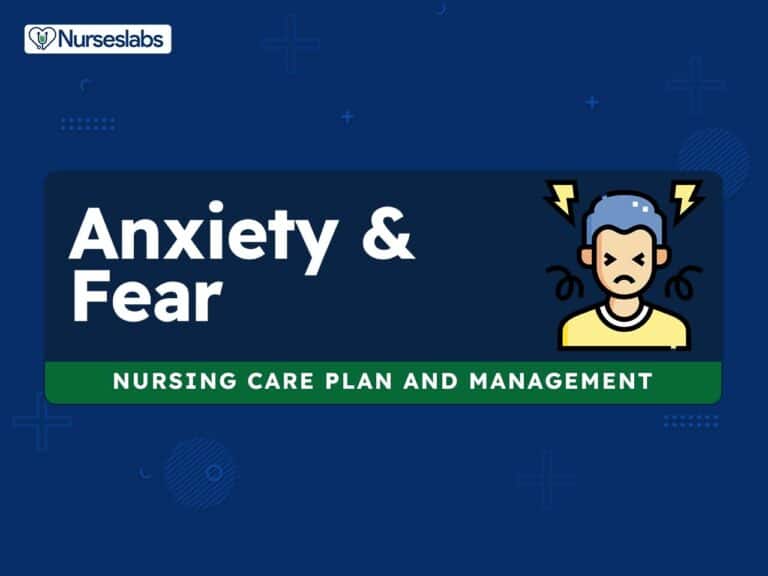Introduction
In recent years, video games have increasingly become a source of solace, entertainment, and even therapy for individuals dealing with various mental health issues. One such game that has garnered attention for its potential therapeutic effects is “Cry of Fear.” Developed by Team Psykskallar, this psychological horror game takes players on a chilling journey into the depths of the protagonist’s psyche. While horror games might not seem like an obvious choice for mental health support, “Cry of Fear” stands out for its unique ability to offer a therapeutic experience.
Cry of Fear achieves this therapeutic effect through several key mechanisms:
Catharsis through Fear: While horror games are known for inducing fear, they also provide a controlled environment for players to confront and process their fears. “Cry of Fear” creates an atmosphere of intense dread, allowing players to experience fear in a controlled and safe manner. The release of tension that occurs after facing these fears can be cathartic, providing a sense of relief and accomplishment.
Emotional Resonance: The game’s narrative delves into deep emotional themes such as loneliness, isolation, and trauma. Players can relate to the protagonist’s struggles, which can evoke empathy and a sense of shared experience. This emotional resonance can be therapeutic, offering players a chance to explore their own emotions and gain insight into their personal struggles.
Problem-Solving and Coping Skills: “Cry of Fear” requires players to solve puzzles and navigate challenging situations. These problem-solving aspects can help improve cognitive function and enhance critical thinking skills. Additionally, successfully overcoming in-game obstacles can boost players’ confidence and sense of achievement, which can translate into improved self-esteem and resilience in real life.
Social Connection: While “Cry of Fear” is primarily a single-player game, it has a dedicated fan community. Engaging with this community allows players to connect with others who share their interests, fostering a sense of belonging and reducing feelings of social isolation.
Distracting from Distress: Gaming can serve as a healthy distraction from distressing thoughts and emotions. Immersing oneself in the game world can provide temporary relief from anxiety or depression symptoms.
A Safe Space for Expression: Some players use “Cry of Fear” as a platform for self-expression. They create and share their custom content, which can be a form of artistic expression and a means to process their emotions.
It’s important to note that while “Cry of Fear” and similar games can offer therapeutic benefits, they should not replace professional mental health treatment when needed. However, they can be valuable tools as part of a holistic approach to mental well-being, providing individuals with a unique and engaging avenue for self-exploration and emotional release.
For additional details, consider exploring the related content available here THE IMPORTANCE OF PLAY DURING HOSPITALIZATION OF …
A Journey into Darkness
“Cry of Fear” plunges players into the harrowing world of Simon Henriksson, a young man suffering from severe mental distress. As the game unfolds, players navigate a nightmarish version of Simon’s hometown, battling grotesque monsters and confronting his inner demons. The game’s eerie atmosphere and psychological horror elements are designed to make players feel the weight of Simon’s mental struggles.
“Cry of Fear” is a masterpiece of psychological horror, immersing players in the turbulent psyche of its protagonist, Simon Henriksson. With its hauntingly detailed world and terrifying monsters, the game invites players on an unsettling journey through the darkest corners of the human mind, making it an unforgettable experience for horror enthusiasts.”
You can also read more about this here: A Journey Through Darkness – My Life With Chronic Depression …

Empathy and Catharsis
One of the game’s remarkable aspects is its ability to elicit empathy from players. As they guide Simon through his personal hell, players start to understand the depths of his anguish. This shared experience can be incredibly cathartic, helping players confront their emotions and gain insight into their own mental health challenges.
“The portrayal of Simon’s emotional journey in ‘Hellblade: Senua’s Sacrifice’ strikes a chord with players, fostering empathy and emotional connection. This powerful narrative encourages self-reflection and can be a therapeutic experience, promoting mental health awareness and understanding.”
If you’d like to dive deeper into this subject, there’s more to discover on this page: Catharsis: Definition and 10+ Examples
A Safe Space to Confront Fear
Surprisingly, horror games like “Cry of Fear” can provide a sense of control over fear and anxiety. By facing terrifying situations within the game, players may gradually desensitize themselves to fear triggers in the real world. This process, known as exposure therapy, can be effective in helping individuals cope with anxiety and phobias.
Additionally, horror games often require problem-solving and critical thinking under pressure, enhancing cognitive skills. They challenge players to manage limited resources, make quick decisions, and adapt to unpredictable scenarios, fostering mental resilience and strategic thinking. As a result, while horror games might induce fear, they also offer valuable opportunities for personal growth and skill development.
Should you desire more in-depth information, it’s available for your perusal on this page: Cry of Fear | Cry of Fear Wiki | Fandom
The Role of Immersion
Immersion is a key component of “Cry of Fear’s” therapeutic appeal. The game’s immersive nature allows players to temporarily escape their own reality and focus on Simon’s struggles. This diversion from their own problems can provide much-needed relief and relaxation.
The immersive quality of “Cry of Fear” plays a pivotal role in its therapeutic effects. Here are some ways in which this immersion contributes to the game’s appeal:
Total Engagement: “Cry of Fear” draws players into its dark and suspenseful world, encouraging total engagement. When players are fully absorbed in the game, they are less likely to dwell on their real-life stressors or negative thoughts. This heightened focus on the game can offer a welcome break from daily worries.
Emotional Connection: The game’s storyline and character development allow players to form emotional connections with the protagonist, Simon. As they guide Simon through his nightmarish journey, players may find themselves empathizing with his struggles and emotions. This emotional connection can be therapeutic, providing a safe space to explore their own feelings and experiences.
A Sense of Control: In “Cry of Fear,” players have agency over Simon’s actions and decisions. This sense of control is empowering and can counter feelings of helplessness that often accompany mental health challenges. Players can experiment with different strategies and choices, reinforcing the idea that they have some control over their own lives.
Mindfulness and Distraction: Immersion in the game world can promote mindfulness, a mental state characterized by focused attention on the present moment. This can help players temporarily detach from rumination or anxious thoughts about the past or future. Additionally, the game’s suspense and challenges demand players’ concentration, acting as a healthy distraction from distressing emotions.
Sensory Stimulation: “Cry of Fear” engages multiple senses, including sight and sound, to create a chilling and atmospheric experience. The sensory stimulation can be captivating and transport players to another world. This sensory-rich experience can be a welcome escape and contribute to relaxation.
Progress and Achievement: As players progress through the game, they encounter challenges and obstacles that require problem-solving skills and perseverance. Overcoming these hurdles provides a sense of accomplishment and mastery. This feeling of achievement can boost self-esteem and self-efficacy, which are crucial for mental well-being.
It’s important to emphasize that while immersion in a game like “Cry of Fear” can be therapeutic, moderation is key. Excessive gaming can have negative consequences, so it’s essential to maintain a healthy balance between gaming and other aspects of life. For those struggling with mental health issues, seeking support from mental health professionals remains a critical component of overall well-being.
Don’t stop here; you can continue your exploration by following this link for more details: Future of mental health in the metaverse | General Psychiatry
Community Support
Online gaming communities can also play a significant role in the therapeutic aspect of games like “Cry of Fear.” Players often share their experiences and strategies, providing a sense of camaraderie and support. Connecting with others who understand the game’s psychological impact can foster a sense of belonging, which is crucial for mental well-being.
The online gaming communities surrounding titles like “Cry of Fear” offer more than just a space for gameplay discussions. They become safe havens where individuals facing similar challenges can openly share their thoughts and emotions. These communities serve as a reminder that in the world of gaming, you’re never truly alone, and there’s always someone willing to listen and offer a helping hand. It’s this sense of shared understanding and support that can be incredibly therapeutic for those navigating the psychological depths of such games.
For a comprehensive look at this subject, we invite you to read more on this dedicated page: Cry of Fear | Cry of Fear Wiki | Fandom

Balancing Act
While “Cry of Fear” offers therapeutic potential, it’s important to approach gaming for mental health with balance. Excessive gaming can lead to negative consequences, including increased stress and social isolation. Therefore, it’s crucial to enjoy games like “Cry of Fear” in moderation and seek professional help when needed.
“Gaming, including titles like ‘Cry of Fear,’ can have therapeutic benefits, but moderation is key. Excessive gaming can result in stress and isolation, so a balanced approach is essential. If you find your gaming habits negatively impacting your mental health, it’s wise to seek professional support for a healthier balance.”
To expand your knowledge on this subject, make sure to read on at this location: COVID-19 and your mental health – Mayo Clinic

Conclusion
“Cry of Fear” demonstrates that video games can be more than just a form of entertainment. They can serve as powerful tools for promoting mental health and well-being. By providing an immersive experience that allows players to confront fear, anxiety, and personal demons, this game has opened up new avenues for mental health support within the gaming community. As our understanding of the therapeutic potential of video games continues to grow, it’s exciting to see how gaming can positively impact the lives of those who need it most.
“Cry of Fear” represents a significant shift in the perception of video games. It showcases that these interactive mediums can be harnessed for therapeutic purposes, helping individuals manage and overcome mental health challenges. By immersing players in a world where they confront their fears and anxieties, the game promotes a unique form of exposure therapy. This approach, when used intentionally and responsibly, can complement traditional mental health treatments, offering an innovative and engaging way to address psychological issues.
Moreover, the success of “Cry of Fear” highlights the potential for video games to reduce stigma surrounding mental health discussions. It encourages open dialogues about anxiety, fear, and emotional struggles, fostering a supportive community within the gaming realm. As game developers and mental health professionals collaborate further, we can anticipate more games that serve as therapeutic tools, providing individuals with practical coping mechanisms and emotional resilience. The future of gaming holds exciting possibilities for mental health and well-being, demonstrating that entertainment can be a vehicle for positive change in people’s lives.
You can also read more about this here: Simon Henriksson | Cry of Fear Wiki | Fandom
More links
Looking for more insights? You’ll find them right here in our extended coverage: Social anxiety disorder: Causes, symptoms, and treatment
